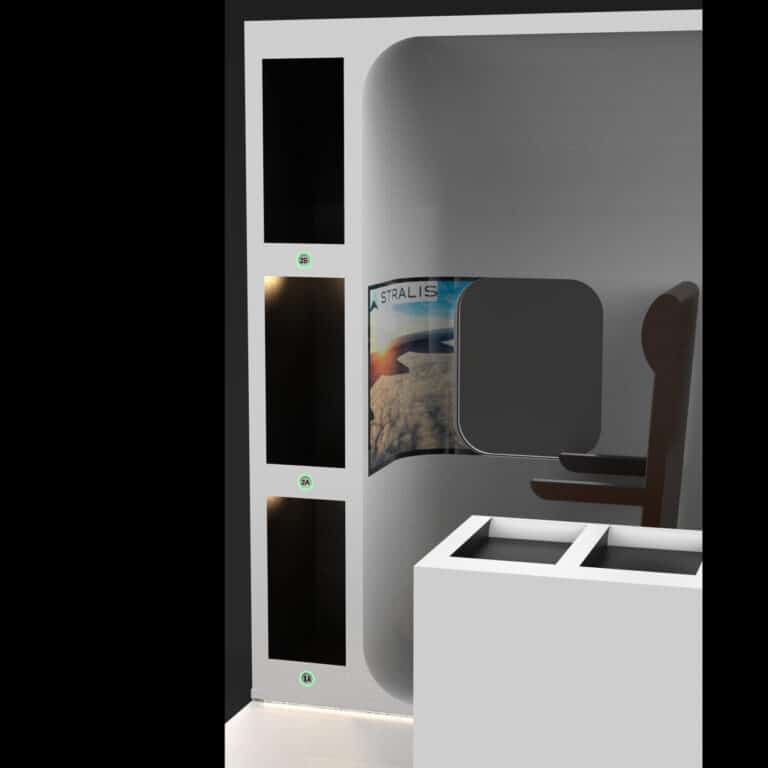Background
The primary objective of this project is to revolutionise the air travel experience, driven by the emergence of hydrogen aviation. This ambitious undertaking delves into the transformative potential of hydrogen-powered aircraft, with a specific focus on Stralis Aircraft’s modification of the renowned Beech 1900D-HE. Stralis Aircraft substitutes the traditional turbines and jet fuel system with their advanced Hydrogen Electric Propulsion System (HEPS). The project places a particular emphasis on enhancing passenger comfort from the very moment of check-in to the in-flight experience. The mission is to reshape the way aviation is perceived, offering a sustainable, eco-friendly alternative to traditional fossil fuels while simultaneously elevating every aspect of the passenger experience.
Research findings
Secondary:
The Aviation Green Paper, released in 2023, is pivotal for shaping Australia’s aviation policy until 2050. It seeks input on various aviation-related topics, including competition, sustainability, and emerging technologies. Levi Swann’s 2023 article explores hydrogen aviation’s potential impact, emphasising cost, accessibility, and environmental benefits. The passenger experience in air travel is a critical factor. A 2022 article on ‘Aircraft Interior and Seat Design’ highlights passenger comfort’s significance, covering factors like sustainability, anthropometry, sound, climate, and lighting. Designing for passenger comfort presents challenges, balancing regulations, and safety. It was suggested that there would be a need for minor changes rather than a complete cabin redesign.
In summary, the literature underscores the need for innovative storage, cabin design, and passenger safety in the transition to hydrogen aviation. The Aviation Green Paper addresses environmental concerns and affordability while highlighting passenger comfort’s central role. Balancing profitability with passenger satisfaction presents challenges and opportunities for future design and innovation.
Primary:
The interviews and survey findings have delivered valuable insights across various facets of aviation and the potential implications of hydrogen technology. Notably, they have shed light on concerns associated with hydrogen aviation, highlighting the intricate challenges related to storage, infrastructure, and cabin space. Additionally, it was noted that the staff undergo a labour-intensive baggage handling process, which places a considerable physical strain on ground handlers.
Furthermore, the significance of passenger comfort has emerged as a central theme, encompassing factors like seat quality, cabin climate, noise levels, and cabin humidity. Recommendations for ergonomic seating, enhancements in cabin lighting, and entertainment have been put forth, signifying a strong call for passenger-centred design principles.
The boarding process, within the context of hydrogen fuel adoption, has also been a point of discussion, raising questions about its potential impact on cabin space. Within this discourse, an emphasis on passenger comfort and waste reduction has been made, alongside suggestions for integrating mood lighting and more comfortable seating to elevate the overall passenger experience.
Collectively, these insights underscore the need for advancements in passenger comfort, innovations in cabin design, efficient waste management, and improved luggage handling processes. These findings are poised to provide critical guidance for shaping the industry’s trajectory, especially as it transitions toward hydrogen-powered aviation and endeavours to offer a more passenger-friendly and ecologically sustainable air travel experience.
- Name
- RESEARCH REPORT
- File Type
- application
- File Size
- 2 MB
- Link
- Download File
Introducing hydronex
Introducing HydroNex, this design has a sleek and modern aesthetic, standing out not only for its ability to reduce congestion and disarray in the pre and post-flight phase but also for its capacity to elevate the overall passenger experience.
CONTEXT OF USE
Embark:
disembark:










